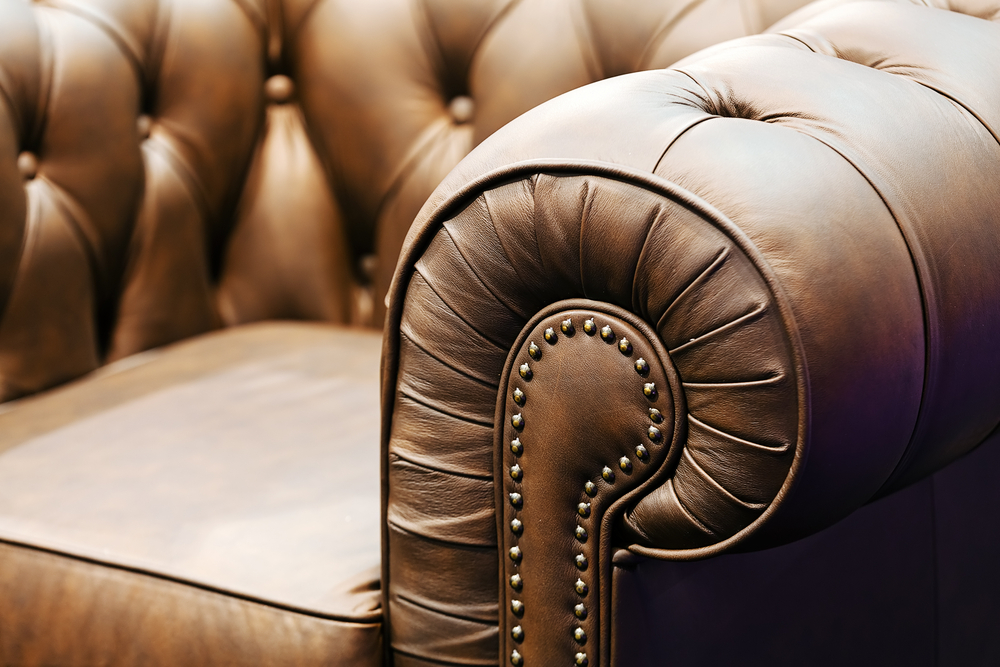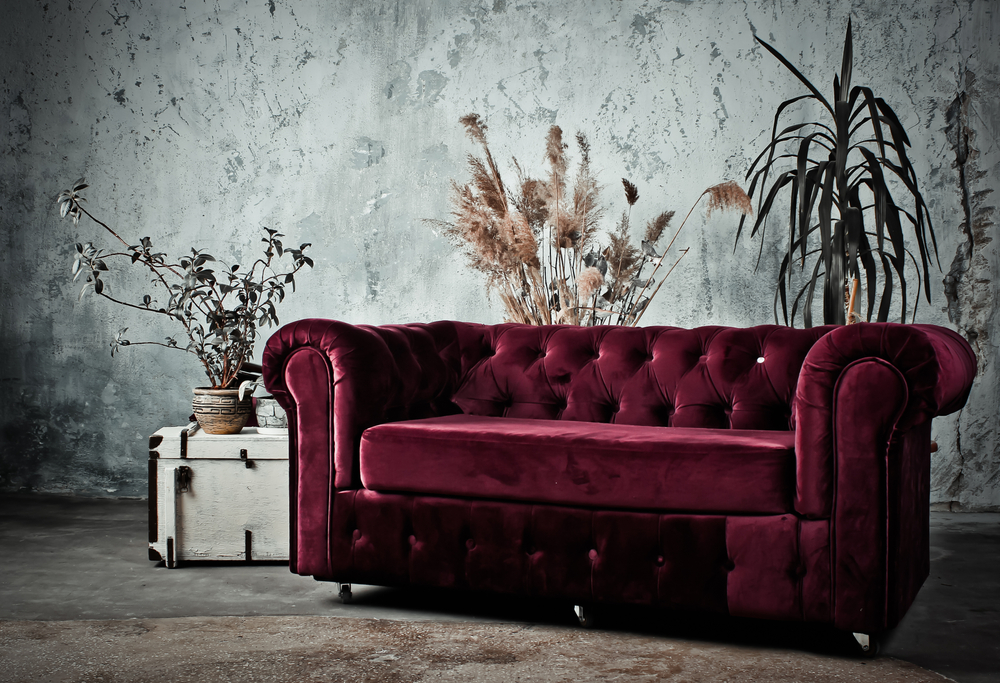Choosing the right sofa material is a crucial decision when furnishing your home. Leather and fabric are two of the most popular options, each with its own advantages and disadvantages.
The choice you make will impact your sofa’s durability, comfort, maintenance, and overall aesthetic. This article explores the key differences between leather and fabric when used as a sofa material.
1. Durability and Longevity
Given the sofa is one of the most frequently used pieces of furniture in the house, a significant factor in choosing a sofa material is durability. High-quality leather can withstand years of use and even improve with age, developing a rich patina over time. It is resistant to spills and stains, making accidents easy to clear up and therefore an excellent choice for homes with children and pets.

Fabric sofas come in a wide range of durabilities. Softer, natural materials, like cotton and linen, may wear out faster and show up stains. Synthetic blends, on the other hand, tend to be more resistant to fading. Make sure if you’re choosing a fabric, you know exactly what you’re opting for. Buyer’s remorse is just around the corner for those who don’t do their due diligence.
2. Comfort and Feel
Whether it’s stretching out for film night or lying down for a quick nap amid a busy weekend, comfort is a top priority when selecting a sofa. Fabric sofas are often considered more comfortable than leather due to their softness and breathability. Fabric remains at a consistent temperature, meaning you avoid a cold or hot shock when sitting down in shorts.
Leather sofas can feel cold in winter and hot in summer. However, with time, leather adapts to body temperature and becomes more comfortable. Some people prefer the smooth, sleek feel of leather, while others appreciate the warmth of fabric.
3. Maintenance and Cleaning
If easy maintenance is a priority, leather is the way to go. Leather sofas can be wiped clean with a damp cloth, making them resistant to stains and spills. Regular conditioning is necessary to prevent cracking and drying, but overall, the maintenance is straightforward.
Fabric sofas tend to absorb dust, dirt, and odours more easily. Many fabric sofas come with removable and washable covers, but some require professional cleaning. Make sure you are aware of the costs of this before taking the plunge.
4. Aesthetic Appeal
When it comes to aesthetics, it’s a matter of taste. Both leather and fabric sofas come in a variety of colours and styles, allowing you to find the perfect match for your home decor. Leather sofas offer a sophisticated and timeless look that can be paired with various themes, making them a great choice for modern, minimalist, or classic interiors.
Fabric sofas offer more versatility in patterns, textures, and colours. Whether you want a bold statement piece or a cosy, casual look, fabric provides more options for personalisation.
If commitment to one style or another is your issue, remember you can always alter the look with the right throws and cushions.

5. Cost
Price is an important factor when choosing between leather and fabric sofas. Leather sofas tend to be more expensive upfront due to their durability and high-end appeal. However, their longevity often makes them a worthwhile investment.
Fabric sofas, while generally more affordable, may need to be replaced sooner if the material wears out or becomes stained beyond repair. If budget is a concern, high-quality synthetic fabrics can provide a balance between affordability and durability.
6. Pet and Child-Friendliness
For households with pets or young children, the right sofa material can offer peace of mind. Leather doesn’t trap pet hair and is easy to clean so is a great choice for owners with pets, however, if you’ve got an active cat or dog, take note that leather can be susceptible to scratches from claws.
Fabric sofas may attract pet hair and can be more challenging to clean, but they are often more resistant to scratches – though beware, rougher fabrics can be a delight to cats looking to stretch their claws. Some fabric options, like microfiber or stain-resistant treatments, can ably withstand pet and child-related messes.
7. Environmental Impact
Sustainability is an increasing concern for many homeowners. Leather sofas can last for decades, reducing the need for frequent replacements.
Fabric sofas made from natural or recycled materials can be an eco-friendly option. Many brands now offer sustainable fabric choices, such as organic cotton or recycled polyester, to minimise their carbon footprint.
Make sure you do your research on the options to find out which option suits your sustainability requirements.
Final Verdict: Which One is Right for You?
The choice between leather and fabric sofas depends on your lifestyle, budget, and style.
- Choose leather if you want a durable, low-maintenance, and sophisticated sofa that ages beautifully.
- Choose fabric if you prioritise comfort, affordability, and want to choose from a wide variety of colours and textures.
Whether you opt for the luxury of leather or the cosiness of fabric, your sofa should reflect your style and provide comfort for years to come.





